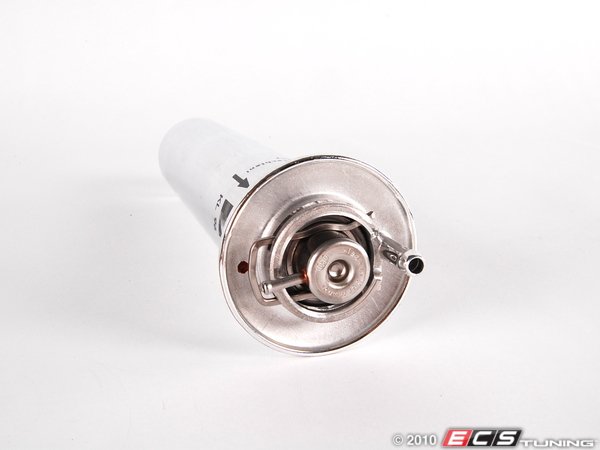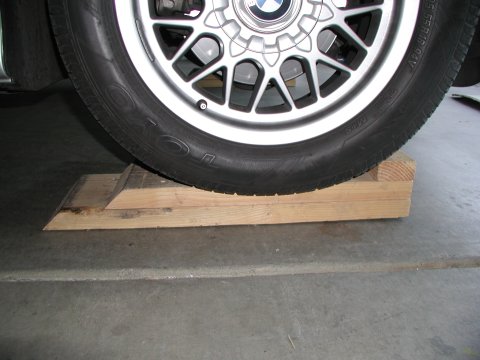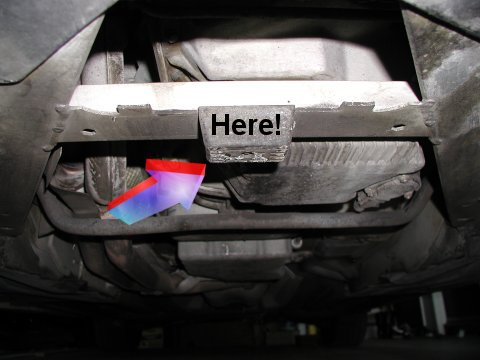2001 BMW E39 530i Fuel Filter DIY
I always felt this DIY was weak, and lacked a lot of detail and photos. As a result, there are a lot of unknowns:
- How do you jack up the car?
- How do you remove those plastic undercarriage fasteners?
- How much gas gushes out?
- Should you disable the fuel pump fuse?
- Which cars have those "self-destructing" crimp-style hose clamps? (Oteker)
- Is the pressure regulator built-in?
- Should you replace the fuel lines while you're there?
This is one reason I put it off for so long. Well, all this and more is addressed below.
This DIY took me about 5 hours.
A lot of it was the unknown, trying the wrong method, and thinking what if this/that....
If I did it again, it would probably take me 45 mins.
What follows is a more thorough DIY write up than what currently exists online.
I have several pieces of advice that will make your job faster & easier.
Parts to buy:
At 11 years and 120k miles, my fuel and vacuum lines were still good as new. They did not need to be replaced b/c of condition.
However, they are near impossible to remove! Trust me, just cut off ALL the hoses and clamps, and replace with new.
Don't try to remove and reuse them. Just trust me on this.
* 1 foot of fuel line. 5/16" ID (Inner Diameter). I got it at AutoZone for $8. Once you're in there, you will chop this into 3 small sections to match, and have some left over.
* Expanding Rivets. Part #51118174185. .26c/each at the dealer. They are reusable, but I ripped the head off one of the nails while trying to get it out. Don't get caught without spares. There are 4 or 5 holding the panel. Just buy 10, and save a few extra. I like to just replace everything with new stuff on the way back out.
* 6 hose clamps. 12-15mm. Part #07129952104. About .75c to $1/each. Dealer was $1.20
* 6 inches of vacuum line. Inner diameter 1/8". I had some left over from replacing some vacuum lines in the engine bay. I ordered from this seller for $1/foot. Great price
I ordered from this seller for $1/foot. Great price.
Total cost of all parts above is about $20.
I think I paid $52 for a Mann filter from AutoHauzAZ.com
Fuel filter can be found using part number 13321709535 on the website I made...
www.furiousmethod.com
Extra tools to have on hand:
* Utility knife.
*
Tin snip / wire cutter. You need a larger one for leverage. (To cut off the single use OEM hose clamps)
* Needle-nose pliers
* I used the small 1/4" drive sockets (5, 8, 10mm)
*
$5 thumb wheel ratchet came in handy.
*
I wish I had a $5 trim pry bar on hand Else, just pry expanding rivets off with flathead and/or needlenose. Be patient, some can really be tight.
* Dishtowel and large radius bowl to absorb spilled gas.
Jacking up the car
I used this $85 low profile jack
* First, I drove up onto 2 staggered planks of wood. This gave me extra clearance room to get my low profile jack under the front bumper to raise the car from the middle jack block (under the engine)
* Chock the wheels, pull the E-brake.
* Jack up the car.
* Put 2 jack stands at the side jack points.
* Lower car onto jack stands.
* Remove jack.
Removing undercarriage panel
See this video to see how the expanding rivets work.
* Once you pry up the expanding rivet nailhead, just pry a screwdriver b/w the car and the panel, and just pop off the panel and rivet at the same time . There's no need to try to pry it up from the base. Use a little muscle and give it a quick "pop". It can take it.
* You'll also need to remove 2 screws in the wheel well.
* There are a few other bolts you'll need to remove. They all came off easily. One inner tab is hooked onto a bracket, so don't be afraid to get under the car and look at the inside edge of the panel.
Removing the filter
Vacuum line
Front fuel line
Note: I did NOT remove the fuel pump fuse in the glove box. Why? I was curious if it was necessary, and just how much gas would actually come out with fuel pump pressure still on. See below.
Note: In the rear, make sure you notice that the curved fuel line goes to the center nipple of the fuel filter.
* Ok, let's start! First, loosen all the hose clamps, and move them to the middle of the hose area. Use the ratchet. I think it was 5mm. Screwdrivers suck on hose clamps. One was rusted solid and stripped, but thankfully it was on the filter side, so I never had to remove it.
* JUST CUT OFF THE HOSES. Don't try to properly remove and save them. You will waste a TON of time trying to pry them off. There is very little play with these hoses, and it's very hard to get a proper grip. I have no idea how you can twist or pry these hoses off. I sat there for a long time wrestling, picking, prying, pushing, pulling...all to no avail.
In the end, I decided to cut the hoses with the utility knife. Mentally, this was the hardest part of the entire DIY, b/c once you cut/destroy, there's no going back. The car is now inoperable. Now, the only way out is to complete the entire job successfully, or get a tow to the mechanic.
I only detached the side of the hoses that were attached to the car. I did not detach the hoses from the fuel filter itself. First, I sliced the vacuum hose to get it off. Then I sliced the front fuel hose and forced it off. The filter then pivots down and I drained it into a tupperware dish. When I sliced the fuel hose, there was an small initial pressurized squirt (like a Windex bottle), but then it was just a steady dribble. It took a minute or two to drain. When done, place a towel at the front to absorb additional gas that spills while you now work the rear hoses (and move the bowl there)
This is how much gas came out of the front.
Note all 4 hoses are still attached on the filter side.
I then worked on the back 2 hoses. One of the back hoses had the "single use" OEM clamps that have no screws. They must be destroyed to be removed, and are a bitch to remove. I used a combination of large tin snips, needle-nose pliers, and wire cutters to mangle this ****er until it finally unraveled. Notice the notches, as soon as you have some play, try to unravel the clamp. This probably took me 15+ mins to finally get off. Get comfortable. The other 2 hoses had screwdriver-type hose clamps. Note that after you get the first hose off, the last hose can be removed quickly by simply spinning the entire fuel filter a few times around until the 2nd hose snaps its seal and slides off.
![Image]()
![Image]()
![Image]()
There is a bracket holding the fuel filter in place. In hindsight, I think it's best to leave this on until the last step! This way, you don't even need to drain it. Just cut all 3 hoses off, then detach the bracket and slowly lower the filter. Stick your head in there to see how the bracket works. Careful, there is some sort of "star" washer that the end of the bolt screws into once it's all the way in. When you remove the bracket, it will fall down. You'll need to hold this up in place (blind) when you're reassembling. You hold it above the backet so the bolt threads into it once it's all the way through both holes. You'll see.
Here is all the drained fuel. Total maybe 6-12 ounces?. I guess there was dirt in the filter.
Reattaching the filter
Install the old filter's bracket & rubber bushing onto the new filter.
Next, attach the new vacuum line to the plastic tube on the car. If you try to attach the vacuum line to the fuel filter first, and wait to attach the other end once the filter is in the way, it will be harder. You need to grab the plastic tube, and muscle on the vacuum line. Push hard! Get it on there.
I reattached the 2 rear hoses first. If you attach the front line first, you'll never get these back on. There's just no play here. Hoses are stiff. So, connect these first! Put the 2 hose clamps around each hose before reattaching! Also, the curved fuel line went to the center nipple of the fuel filter.
In the front, I then connected the vacuum line. Then, I connected the front fuel line. You'll notice the front metal fuel line can be pushed forward to give yourself some room to get the front fuel hose seated. You'll need to flex the front fuel hose a little also.
Parting shot before putting the panel back on.
Reattaching the panel
To replace the panel, first "hook" that inner tab...Then reattach the main center bolt in that cavity.
With lots of play in the barely attached panel, now attach the front wheel well bolts.
You'll need to wiggle the panel around from the bottom while you try to catch the bolt into the thread. See if you can eyeball the threads through the hole.
Then attach the other bolts. Finally, push in your new expanding rivets. This felt good....
Starting the car
I didn't start the car until everything was buttoned up. To build fuel pump pressure again, I left the key in accessory mode for about 5 mins, while I cleaned up.
Car immediately started on the first crank, as if no gas was ever let out. Zero hesitation!
Now that its over, I'm glad I did this one.
At times I felt I was in over my head, b/c of so many "what now/ which way" moments.
I think having this DIY will make it a lot easier and concrete.































